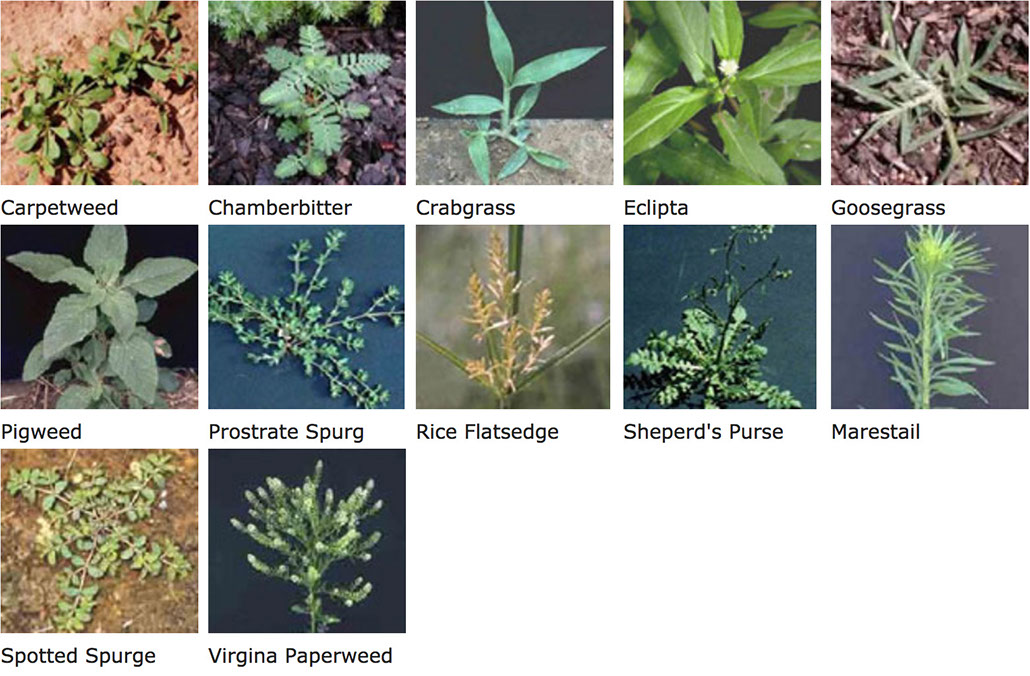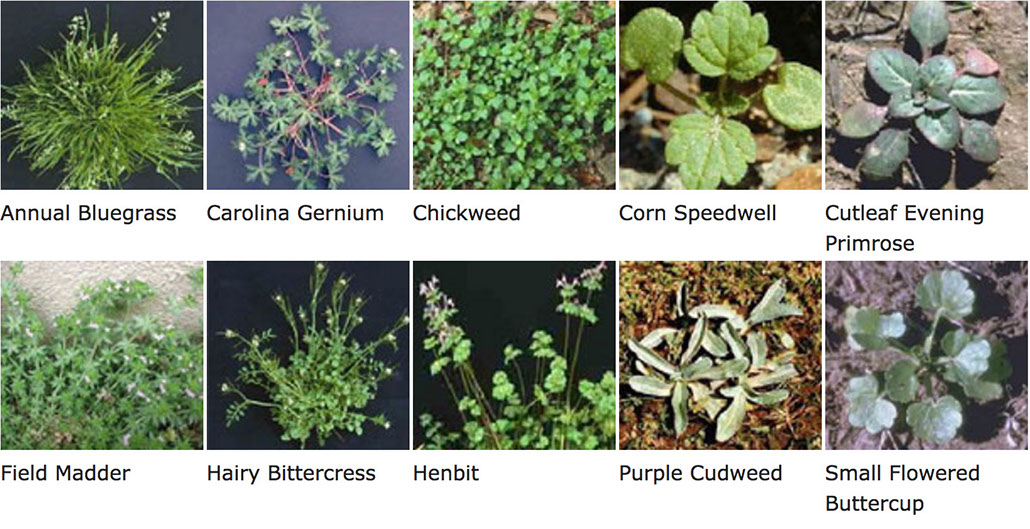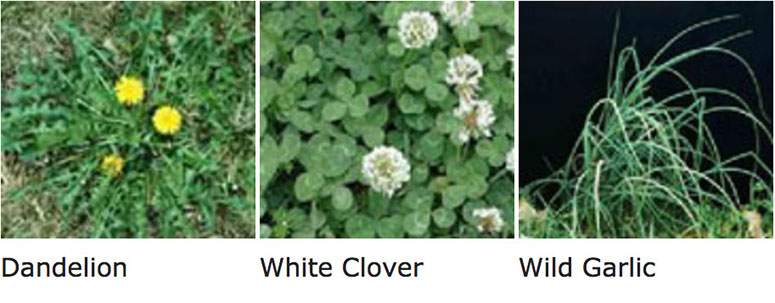For control purposes, weeds can be divided into three types: broadleaf weeds, grass weeds and sedges. Within each type, weeds may have one of three basic life cycles: summer annual, winter annual or perennial.
Broadleaf Weeds
Broadleaf weeds are generally easiest to identify. Broadleaf weeds (like dandelions and clover) are distinctive from and are not botanically closely related to grasses and sedges. Broadleaf weeds have leaves that are broad, and are generally produced in pairs or multiples. Leaves are detached from the main stem by a sub-stem or petiole. Leaves may be simple (having one leaflet, like dandelion) or compound (having more than one leaflet, like clover). Veins within the leaf give a netted appearance in most cases.
Grass Weeds
Grass weeds (like crabgrass) are botanically related to lawn grasses. They have a similar appearance and growth habit. Leaves of grasses are not detached from the main stem. Leaves of grasses are narrow, with a blade-like appearance. Leaves are produced one at a time in two vertical rows. Veins within leaves run parallel. Stems are usually round or flat. Grass weeds are often very difficult to control once established in the lawn. Thus, grass weeds are generally best controlled with preventative or preemergence herbicides. Preemergence herbicides need to be applied prior to germination, as they act by preventing establishment.
Sedges
Sedges (like nutsedge) are not grasses, but have leaves that are similar in appearance and are thus often mistaken for grasses. Since herbicides used to control grass weeds are generally not effective on sedges, it is important to distinguish between the two types. Sedges have two key identifying characteristics: leaves arranged in three vertical rows and a triangular stem. Stems of grasses are commonly round or flat with leaves in two vertical rows.
Summer Annuals
Summer annuals complete their life cycle within 12 months. Summer annuals generally germinate in the spring, grow or develop during the summer, produce seed and die by the fall or after the first hard frost.

Winter Annuals
Winter annuals complete their life cycle in 12 months but generally overlap two calendar years. Winter annuals germinate in late summer to early fall and begin to develop. Winter annuals are dormant or semi-dormant throughout the winter, and flower the following spring. Winter annuals mature and die in late spring or early summer. Summer and winter annuals reproduce and spread by prolific seed production, serving as a ready source of infestation and establishment when conditions are favorable.

Sedges
Sedges (like nutsedge) are not grasses, but have leaves that are similar in appearance and are thus often mistaken for grasses. Since herbicides used to control grass weeds are generally not effective on sedges, it is important to distinguish between the two types. Sedges have two key identifying characteristics: leaves arranged in three vertical rows and a triangular stem. Stems of grasses are commonly round or flat with leaves in two vertical rows.
[Summer Sedges]

[Winter Sedges]
For the best strategy of treatments, including appropriate herbicides, is dependent on weed type and life cycle. These pictures of common weeds in Arkansas will help you identify which weeds are damaging your landscape. (learn more click here).